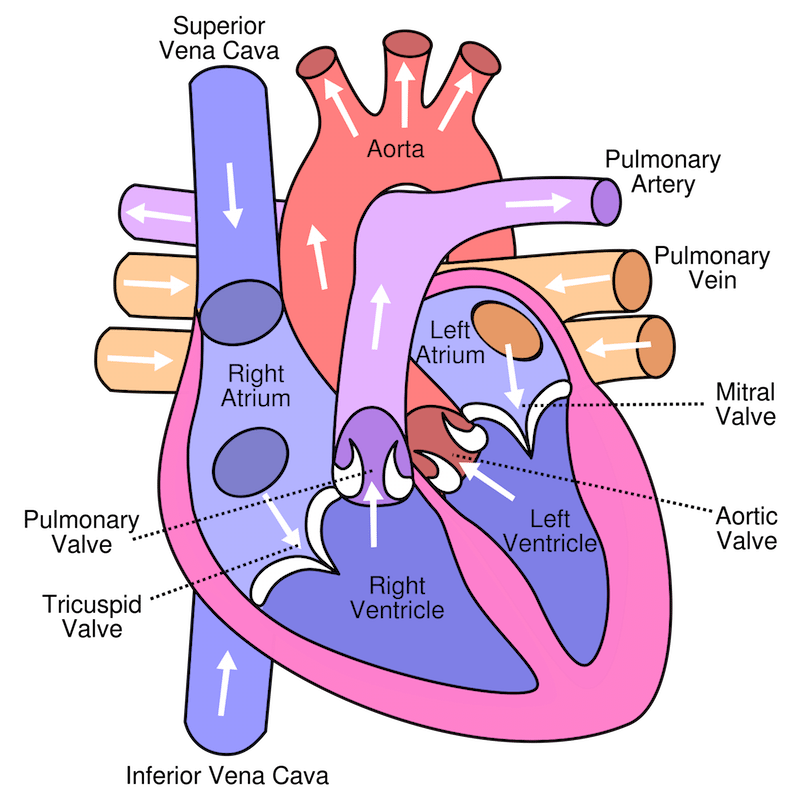Cardiovascular system
Episode #5 of the course “How the human body works”
The cardiovascular system transports blood throughout the body, delivering oxygen and nutrients and removing waste, especially carbon dioxide. The system includes the heart, blood vessels, and the blood. The heart is the central organ, and it’s one of the hardest-working organs in the body. Even while you rest, your heart pumps continuously, circulating all your blood through your body about once per minute.
The heart is located in the chest between the lungs and is protected by the ribcage. It consists of four chambers; the top two are the atriums, which receive blood from the body and lungs, and the bottom two are the ventricles, which pump blood out of the heart, into the lungs, and then through the body. The left ventricle has the strongest muscles, because it pumps blood out into the whole body. Of course, the specialized cardiac muscles need oxygenated blood to work, so the heart has a system of blood vessels specifically to take care of itself first.
Bloods vessels come in three types—arteries, veins, and capillaries—that all have different functions. Veins carry blood toward the heart, arteries carry blood away from the heart, and capillaries connect the two, running into the hard-to-reach spots of organs. The blood vessels contract and release rhythmically as the heart pumps, and measuring this rhythm is called “blood pressure.” Many factors affect blood pressure, but doctors consider it a reliable indicator for how well a heart is performing and how healthy a person is.
Blood looks liquid to the human eye, but it is actually a liquid carrying many solids. Blood itself is made of plasma (the liquid) and two types of blood cells—red and white. Red blood cells are like balloons, filling with oxygen in the lungs and delivering it to other organs. White blood cells guard the blood. Part of the immune system, they destroy foreign objects in the blood, protecting the organs and the oxygen.
Share with friends

